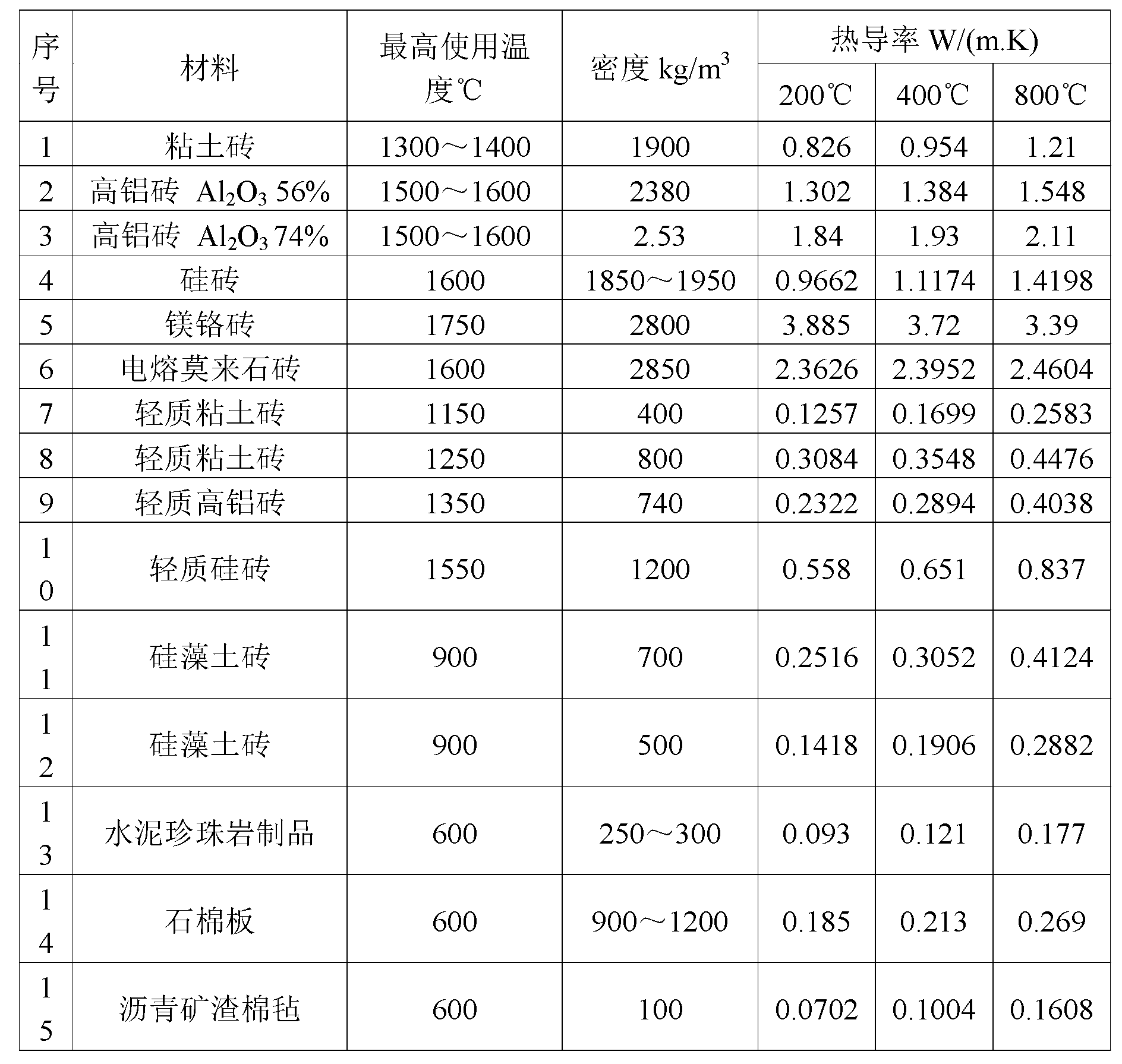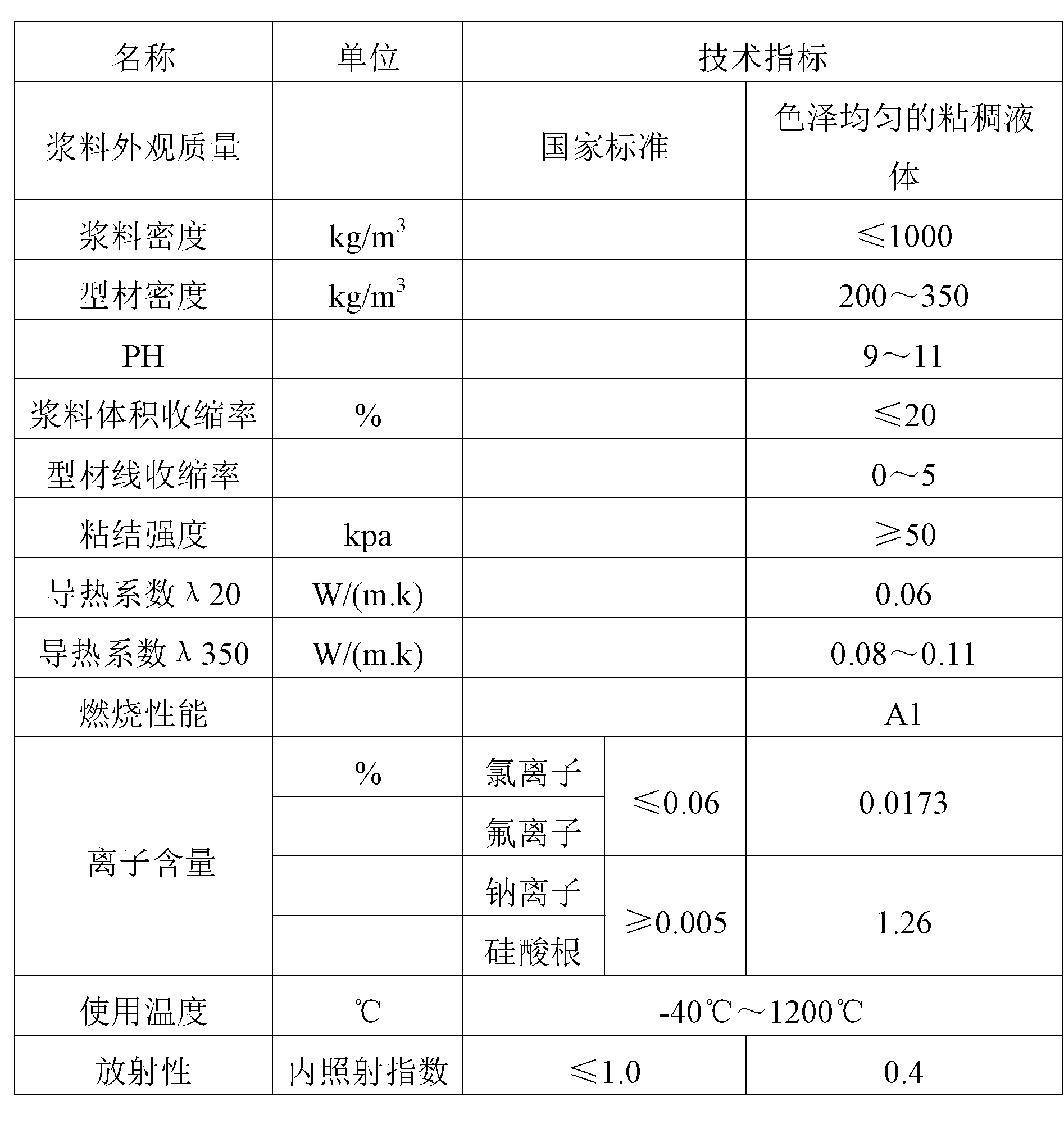Inorganic silicate heat insulating refractory and preparation method thereof
A technology of inorganic silicate and refractory materials, which is applied in the field of silicate refractory materials, can solve the problems of poor heat insulation performance, difficulty in ensuring the use temperature and performance at the same time, and large thermal conductivity, so as to achieve heat insulation performance Excellent heat insulation performance and simple construction method
- Summary
- Abstract
- Description
- Claims
- Application Information
AI Technical Summary
Problems solved by technology
Method used
Image
Examples
Embodiment 1
[0031] Example 1: Inorganic silicate heat-insulating refractory materials include the following components in parts by weight: 5 parts of attapulgite, 50 parts of sepiolite, 500 parts of water at 85°C, 5 parts of ceramic fiber, 5 parts of bentonite, succinic acid 5 parts of sodium sulfonate, 5 parts of liquid aluminum dihydrogen phosphate, 5 parts of sodium silicate, 4 parts of light magnesium carbonate, 5 parts of titanium oxide, 30 parts of expanded perlite, 10 parts of cement, and 16 parts of sodium methyl silicate.
[0032] The preparation method of the inorganic silicate heat-insulating refractory material comprises the following steps: first, add water at 85° C., sodium sulfosuccinic acid sulfonate, and ceramic fibers into a stirring tank and stir for 5 to 8 minutes at a speed of 20 to 30 rpm; Then add sepiolite into the stirring tank, stir at a speed of 50-70rpm for 30-35 minutes, then add liquid aluminum dihydrogen phosphate, attapulgite, bentonite, sodium silicate, lig...
Embodiment 2
[0034] The inorganic silicate heat-insulating refractory material includes the following components by weight: 13 parts of attapulgite, 55 parts of sepiolite, 550 parts of water at 82°C, 9 parts of ceramic fiber, 12 parts of bentonite, and 13 parts of sodium sulfosuccinate 12 parts of liquid aluminum dihydrogen phosphate, 5 parts of sodium silicate, 1 part of light magnesium carbonate, 5 parts of titanium oxide, 15 parts of expanded perlite, 15 parts of cement, and 15 parts of sodium methyl silicate.
[0035] The preparation method of the inorganic silicate heat-insulating refractory material comprises the following steps: first, add water at 82°C, sodium sulfosuccinic acid sulfonate, and ceramic fibers into a stirring tank and stir for 5 to 8 minutes at a speed of 20 to 30 rpm; Then add sepiolite into the stirring tank, stir at a speed of 50-70rpm for 30-35 minutes, then add liquid aluminum dihydrogen phosphate, attapulgite, bentonite, sodium silicate, light magnesium carbonat...
Embodiment 3
[0037] The inorganic silicate heat-insulating refractory material includes the following components by weight: 15 parts of attapulgite, 55 parts of sepiolite, 550 parts of water at 80°C, 15 parts of ceramic fiber, 16 parts of bentonite, and 15 parts of sodium sulfosuccinate 14 parts of liquid aluminum dihydrogen phosphate, 15 parts of sodium silicate, 8 parts of light magnesium carbonate, 1 part of titanium oxide, 45 parts of expanded perlite, 5 parts of cement, and 20 parts of sodium methyl silicate.
[0038] The preparation method of the inorganic silicate heat-insulating refractory material comprises the following steps: first, add water at 80°C, sodium sulfosuccinic acid sulfonate, and ceramic fibers into a stirring tank and stir for 5-8 minutes at a speed of 20-30 rpm; Then add sepiolite into the stirring tank, stir at a speed of 50-70rpm for 30-35 minutes, then add liquid aluminum dihydrogen phosphate, attapulgite, bentonite, sodium silicate, light magnesium carbonate, an...
PUM
 Login to View More
Login to View More Abstract
Description
Claims
Application Information
 Login to View More
Login to View More - R&D
- Intellectual Property
- Life Sciences
- Materials
- Tech Scout
- Unparalleled Data Quality
- Higher Quality Content
- 60% Fewer Hallucinations
Browse by: Latest US Patents, China's latest patents, Technical Efficacy Thesaurus, Application Domain, Technology Topic, Popular Technical Reports.
© 2025 PatSnap. All rights reserved.Legal|Privacy policy|Modern Slavery Act Transparency Statement|Sitemap|About US| Contact US: help@patsnap.com



